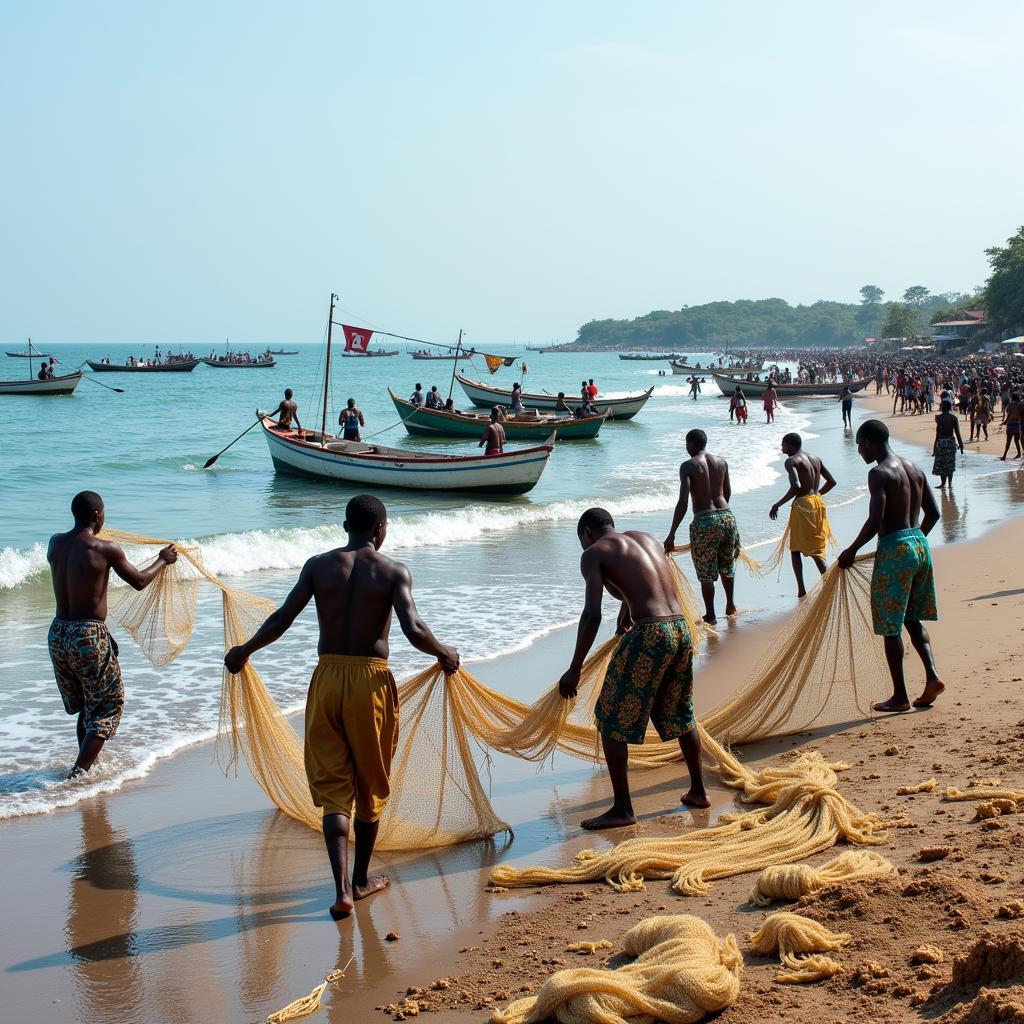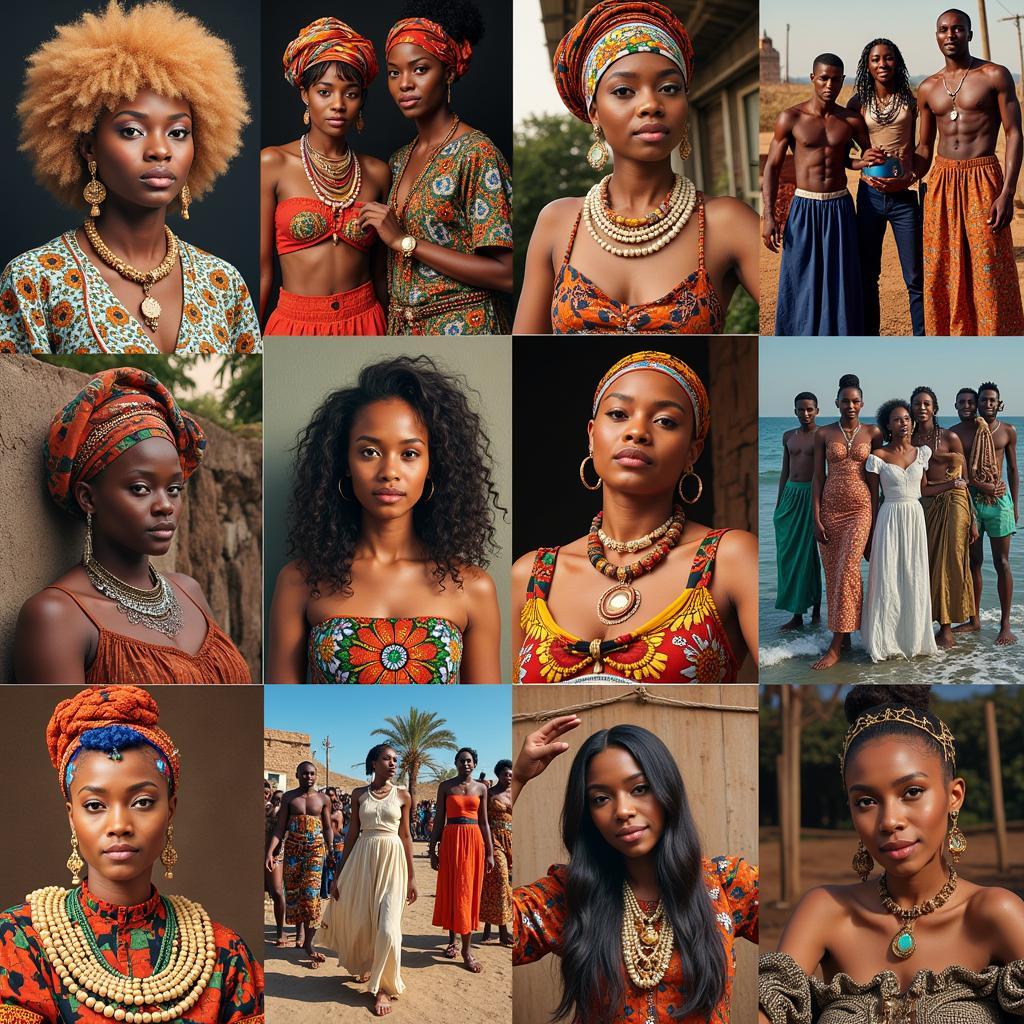Uncorking the Mystery: What is African Champagne?
“African Champagne” – a phrase that might pique your curiosity and leave you wondering about its true nature. While it rolls off the tongue with a certain exotic appeal, it’s essential to understand that authentic champagne can only originate from the Champagne region of France, protected by strict regulations and centuries-old traditions. So, what are we referring to when we talk about “African champagne”?
Beyond the Bubbles: Exploring Sparkling Wines of Africa
The term often refers to a variety of sparkling wines produced across the African continent. These beverages, while not technically champagne, offer a unique taste of African terroir and winemaking expertise. From the sun-drenched vineyards of South Africa to the fertile soils of East Africa, a new wave of winemakers is crafting sparkling wines that are gaining international recognition.
A Toast to Terroir: Key Regions for African Sparkling Wine
South Africa, with its long history of wine production, stands out as a leading producer of what is often dubbed “African champagne.” The Western Cape region, known for its Mediterranean climate, offers ideal conditions for cultivating classic sparkling wine grapes like Chardonnay and Pinot Noir.
Tanzania, while a newer entrant in the world of sparkling wine, is steadily carving its niche. With its high-altitude vineyards and unique terroir influenced by volcanic soils, Tanzania produces sparkling wines bursting with fresh acidity and fruity aromas.
Unveiling the Methods: From Méthode Cap Classique to Charmat
The production methods of “African champagne” often draw inspiration from the traditional Champagne method, known as Méthode Champenoise or Méthode Traditionnelle. In South Africa, this method is referred to as Méthode Cap Classique (MCC). MCC wines undergo secondary fermentation in the bottle, just like true champagne, resulting in fine bubbles and complex flavors.
Some African sparkling wines are produced using the Charmat method, also known as the tank method, which involves secondary fermentation in large, pressurized tanks. This method, while generally less expensive than the traditional method, can still yield high-quality sparkling wines with vibrant fruitiness.
A Taste of Africa: Flavor Profiles and Food Pairings
From dry and crisp to fruity and aromatic, “African champagne” offers a diverse range of flavor profiles. South African MCCs often exhibit notes of citrus, green apple, and toasted bread, reflecting the influence of their cool-climate grapes. Tanzanian sparkling wines, on the other hand, might showcase tropical fruit flavors like pineapple and mango, alongside hints of floral and mineral notes.
The versatility of “African champagne” extends to food pairings. The crisp acidity of these sparkling wines makes them an excellent match for seafood, grilled chicken, and light salads. Sweeter styles can complement spicy dishes and fruit-based desserts.
The Allure of “African Champagne”: Beyond a Name
While the term “African champagne” might be technically inaccurate, it represents a burgeoning industry and a celebration of African winemaking talent. These sparkling wines, crafted with passion and precision, offer a taste of Africa’s diverse terroirs and the continent’s growing presence on the global wine stage.
Frequently Asked Questions (FAQs)
-
What is the difference between “African champagne” and real champagne?
Real champagne can only come from the Champagne region of France, while “African champagne” refers to sparkling wines made in Africa using various methods.
-
Where can I buy “African champagne”?
You can find African sparkling wines at specialty wine shops, online retailers, and some supermarkets.
-
What are some popular brands of “African champagne”?
Graham Beck, Pongrácz, and Simonsig are well-known producers of South African MCCs.
Need More Information?
Contact us at Phone Number: +255768904061, Email: [email protected] Or visit us at: Mbarali DC Mawindi, Kangaga, Tanzania. We have a 24/7 customer service team.


